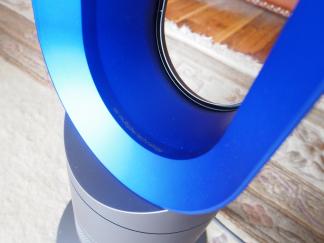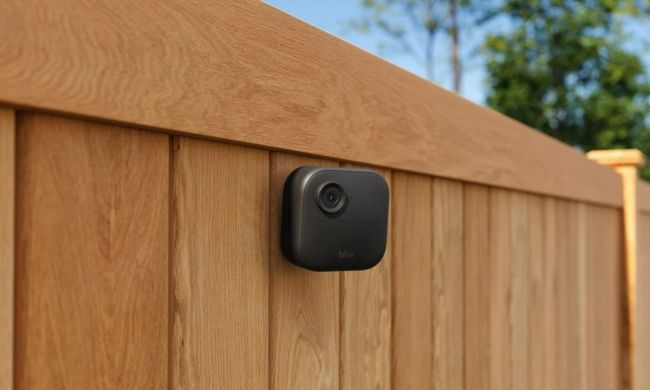
If your summer has been as schizophrenic as New York’s this year, then one day you’ll be melting in your sleep, only to wake up and put on a sweater to combat the chilly morning. The ladies in our office get teased all the time for firing up space heaters in the dead of summer. We just can’t help it. Like Goldilocks, we don’t want the weather too hot or too cold. We want it just right.
So in comes the Dyson Hot+Cool bladeless fan heater. With just one machine, you can keep the same tower in the room all year long to help adjust the temperature. The AM05 version we tested is also 33 percent more powerful than it predecessor, the AM04. With a motor that spins up to 9,000 rpm, it’s like having a little jet in your room with the sole purpose of making you feel cozy. Or, you know, cool. Whatever the day calls for.
Setting up

The Dyson Hot+Cool comes with a remote controller and buttons on the dock to help you figure out the desired temperature from 32 to 99 degrees Fahrenheit, giving lots of room for adjustment.
Functionality
The buttons on the Dyson Hot+Cool’s remote control match the dock. Red and blue buttons denote hotter or cooler, and each click on the side arrow buttons turns oscillation on or off. You can also manually tilt the upper portion of the fan back or forward to direct the flow of air, and the air intensity goes from a level of 1 to 10.

With the new and improved motor in the AM05 model, the Hot+Cool is designed to get the room to your desired temperature in a faster and more energy efficient manner. Bear in mind that it only acts as a fan in the cooling mode, so you’ll need an air conditioner if you want to actually drop the temperature, rather than just creating a breeze.
At the time of testing, our outdoor temperature was steady at 80 degrees. The Hot+Cool did a fine job as a fan at the 32-degree setting, and only needed an intensity of 1 to 3 to keep the 350-square foot room from feeling stuffy. Any higher and it becomes noticeably audible, but not any louder than a regular laptop fan.
Where the Hot+Cool shines is as a heater. It has an impressive range of up to 1,200 square feet for a machine of its size. In our 700-square-foot basement space, the machine heated up the whole room in less than 20 minutes. Thanks to the bladeless design, transporting it around the house is also easy. Just note that the power cord isn’t particularly long, so you’ll need to put it in a good spot near the outlets, or an extension cord.
Safe for kids

One little gripe: The remote control is a bit on the small side of things. You could consider it minimalistic for the office or a bachelor’s pad, but it can be easy to misplace in a house full of kids and other mobile gadgets.
Should you buy it?
It’s rare to come across a device that combines design, utility, and safety so well in a portable electronic. Every gadget market has its own luxury pioneers of some sort – Bang & Olufsen for home theater, Apple for mobile devices, to name a few – yet it’s hard to find anyone that’s ever rivaled Dyson in home appliances. A good space heater already costs about $100, and perhaps you’ll spend another $50 for a portable fan. The Dyson Hot+Cool marries both in a sleek look that competitors have yet to match.
Again, we should note that the cooling feature is not intended to replace an air conditioner. If it did, we’d consider the Hot+Cool an extreme bargain even at $400. For now, it’s an expensive but worthy investment for a device that offers more than meets the eye. And that’s saying a lot, considering how gorgeous this thing is. Even Goldilocks wouldn’t change her mind.
The Dyson AM05 Hot+Cool is available for $400 in blue, silver, or black and nickel.


